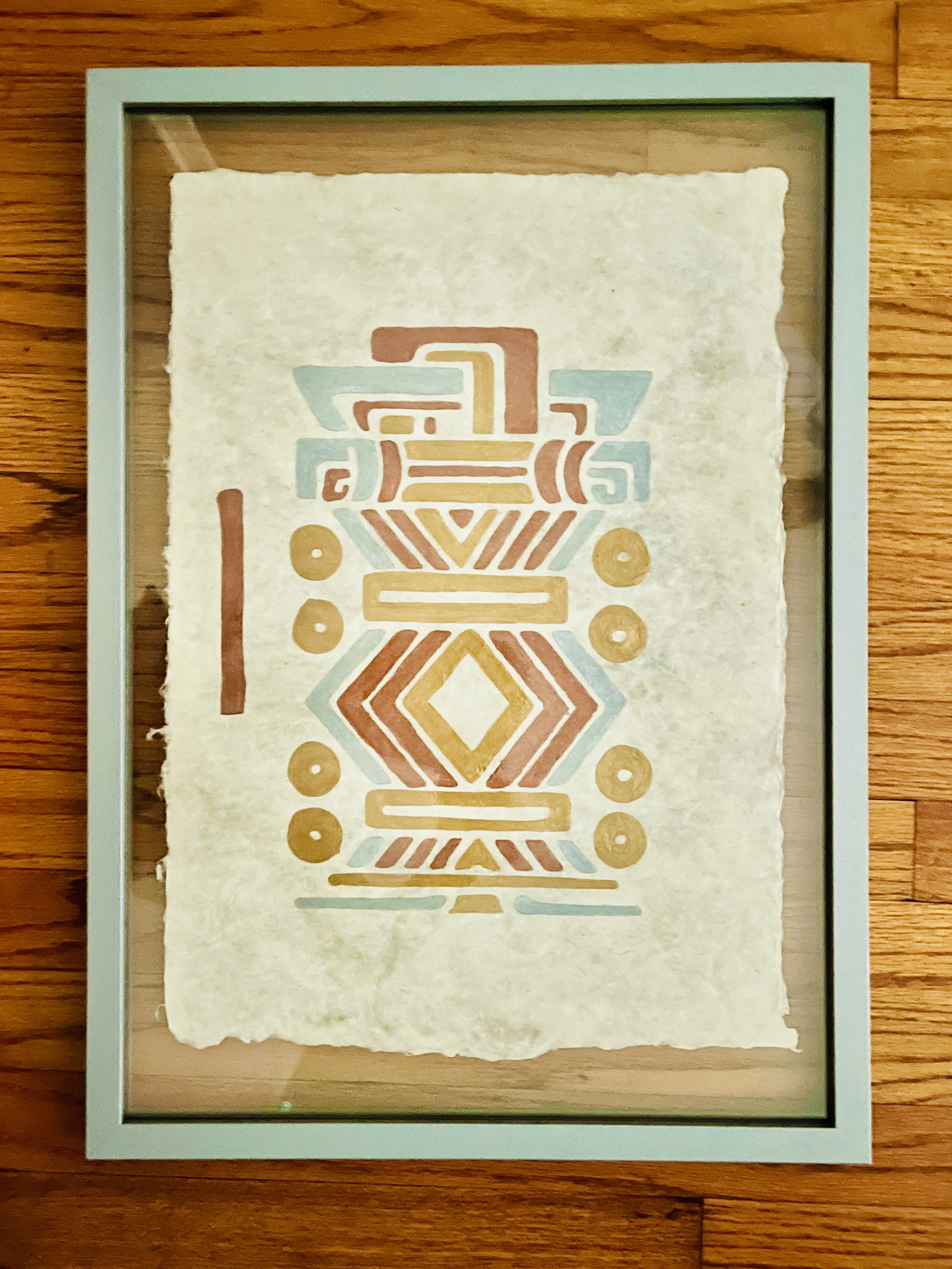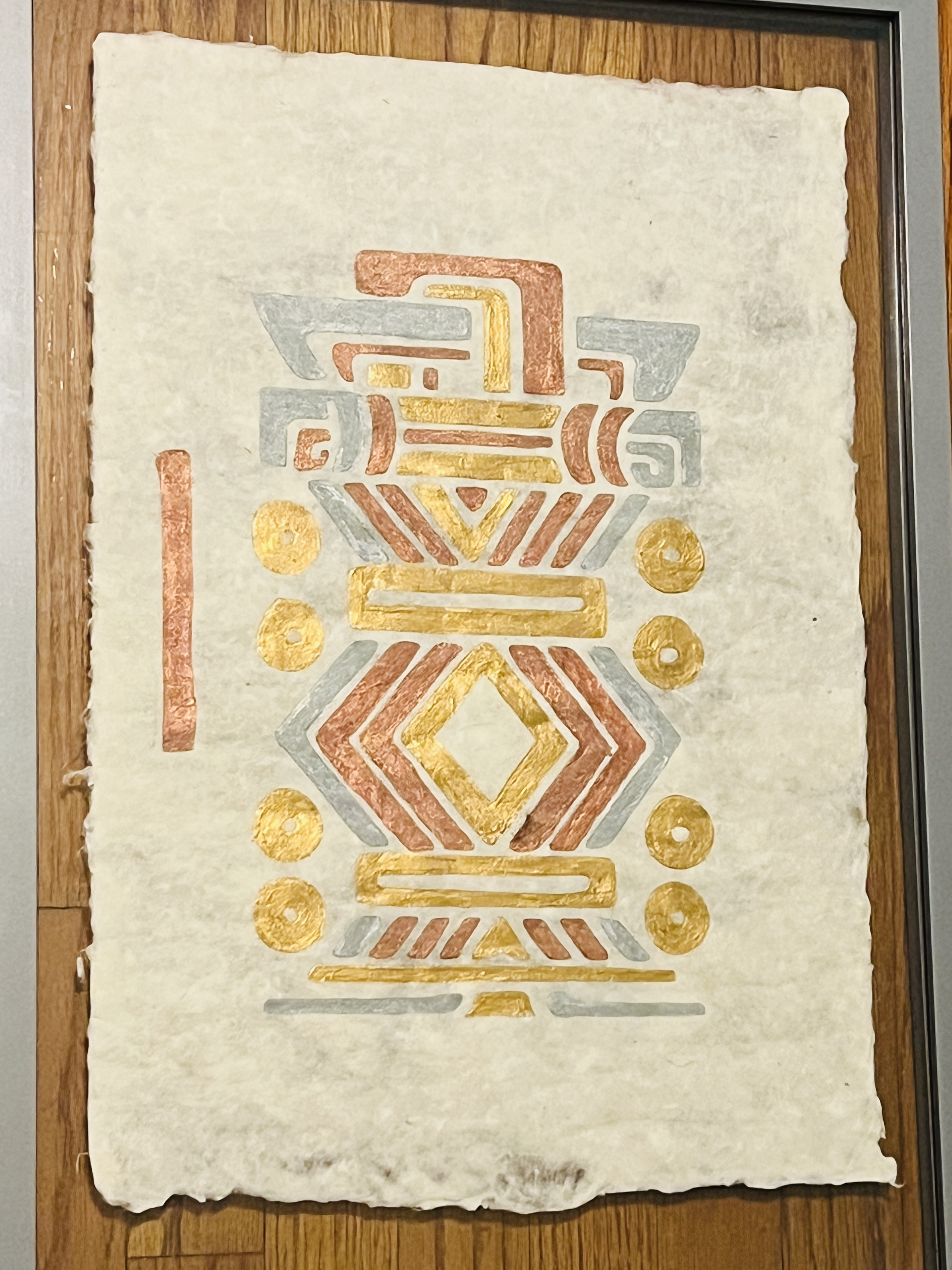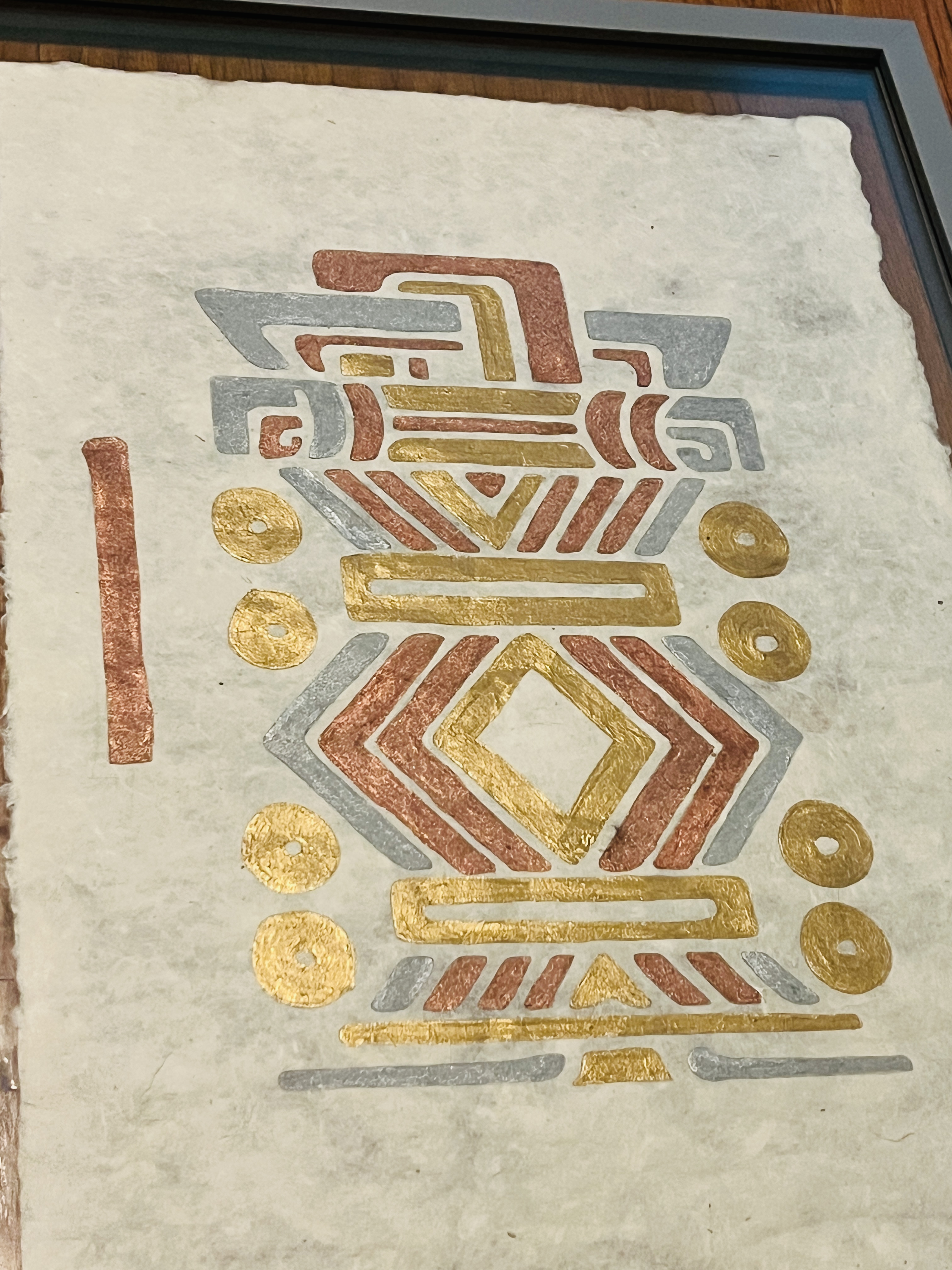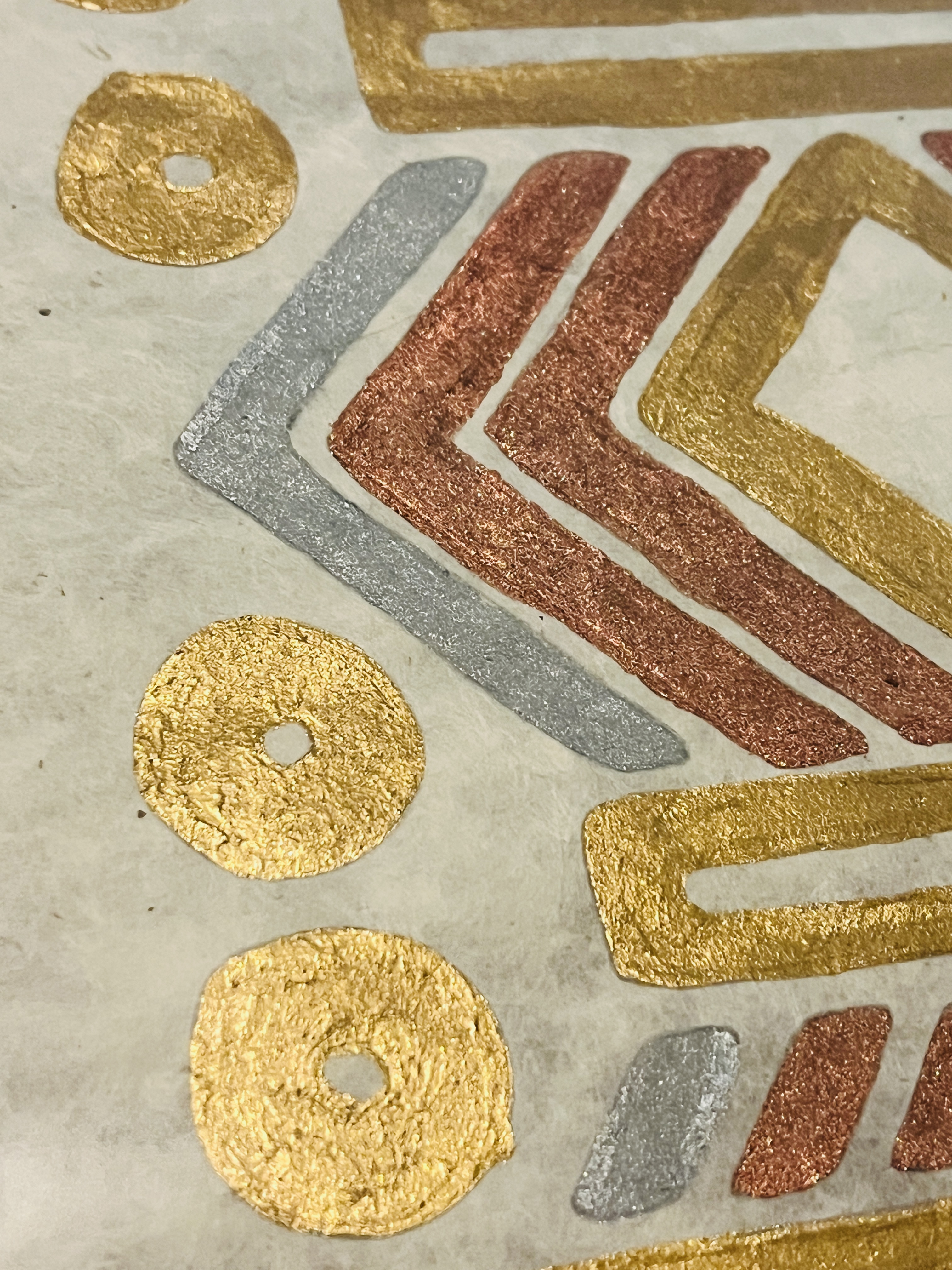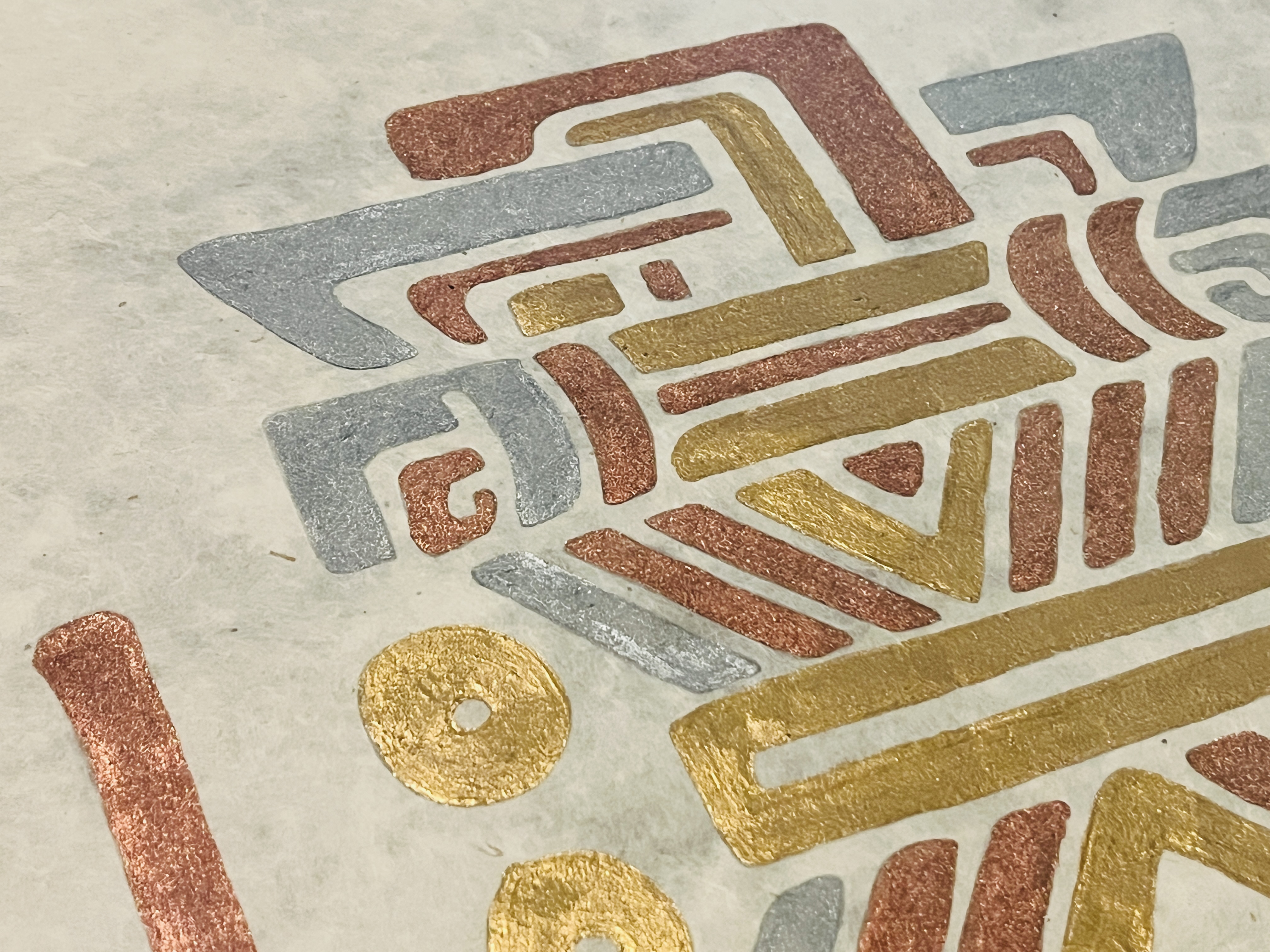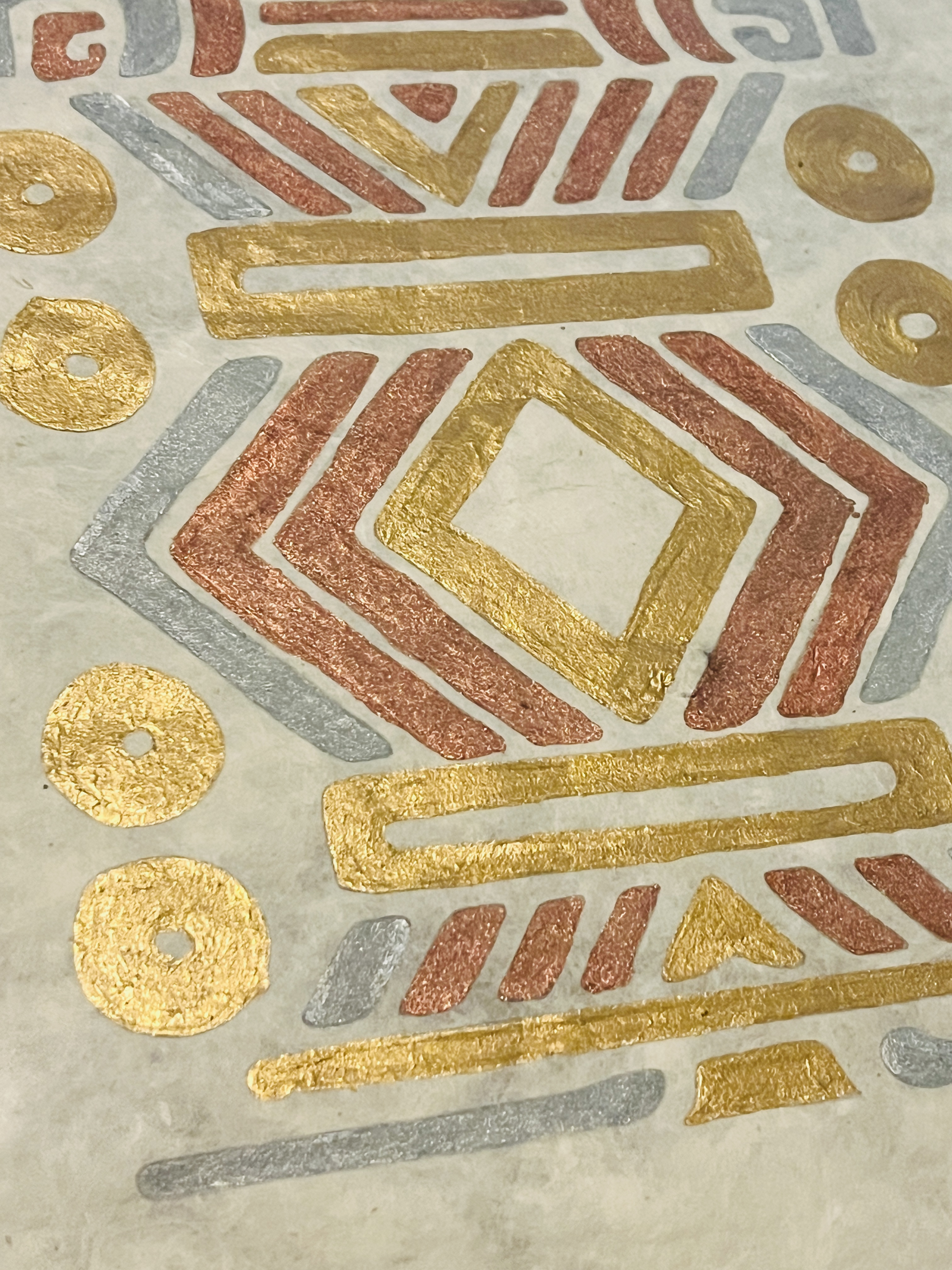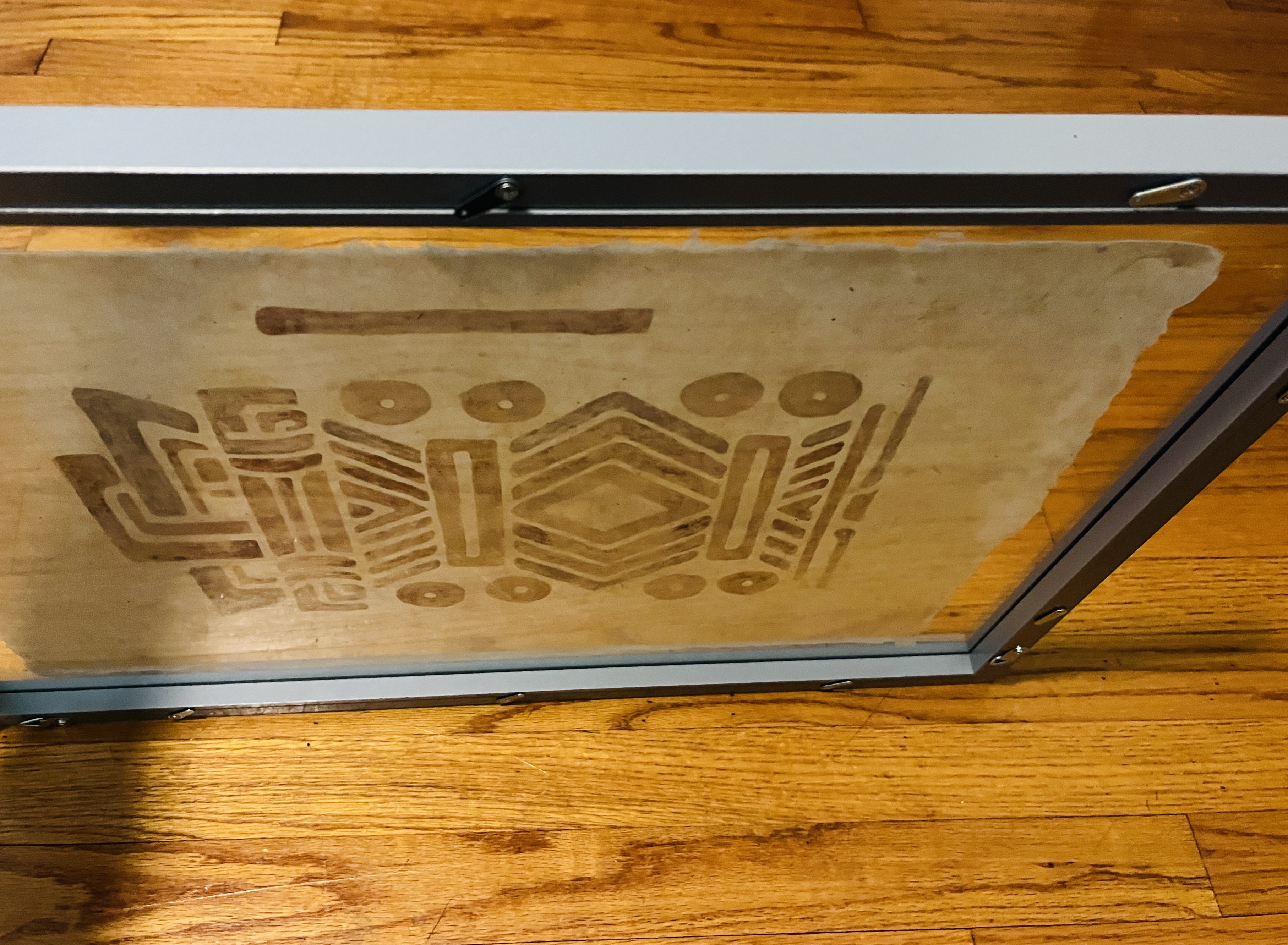Kukulkán
Ancient astronomical precision
meets modern artistry.
Astronomical insight born from ancient astronomy. This one-of-a-kind handmade painting captures the Maya discovery that 8 solar years precisely equals 5 Venus cycles—astronomical mathematics recreated on handmade silk paper from Uzbekistan.
- Handmade Silk Paper from Uzbekistan
- Iridescent Metallic Paints
- One-of-a-Kind Original Artwork
The Story
This artwork is inspired by a motif I saw on the Venus Platform at Chichen Itza, dedicated to Kukulkán—the Maya embodiment of Venus. The specific hieroglyphic I encountered showed intricate mathematical relationships which are recreated in my art: symbols showing "year" (bunches of reeds), eight small circles, and a vertical bar representing the five synodic periods of Venus (5 × 584) equals 8 solar years (8 × 365)—a remarkable example of Maya astronomical precision.
The piece invites you to consider how different cultures throughout history have visualized and predicted Venus' motion: the Maya tracked Venus with extraordinary accuracy, calculating its cycles to within hours over centuries; the Chinese developed detailed tables for predicting Venus's appearances as Taibai, the "Great White Star," integrating these forecasts into their agricultural planning; Indians incorporated Venus (Shukra) into sophisticated mathematical astronomy, calculating its orbital periods for astrological and calendar purposes; Romans, while seeing Venus primarily as a goddess of love and beauty, also developed practical observations of its cycles for timekeeping. We now predict Venus's motion using gravitational equations and orbital mechanics, achieving precision measured in seconds across millennia—yet our mathematical models serve the same human need to anticipate and understand celestial patterns.
By recreating this ancient Maya hieroglyphic, I also invite you to contemplate on the nature of representation itself—how cultural lens shapes perception and meaning. The Maya could predict Venus's path across the sky almost as well as we can today, but they understood it to be something very different than what we do today. The geometric, abstract qualities of the original Maya design reveal striking parallels to contemporary aesthetic values as well - that appeal to me personally as an artist. Their iconography and abstract representation seems almost futuristic in a way, which is interesting to me, given my passion for space exploration.
